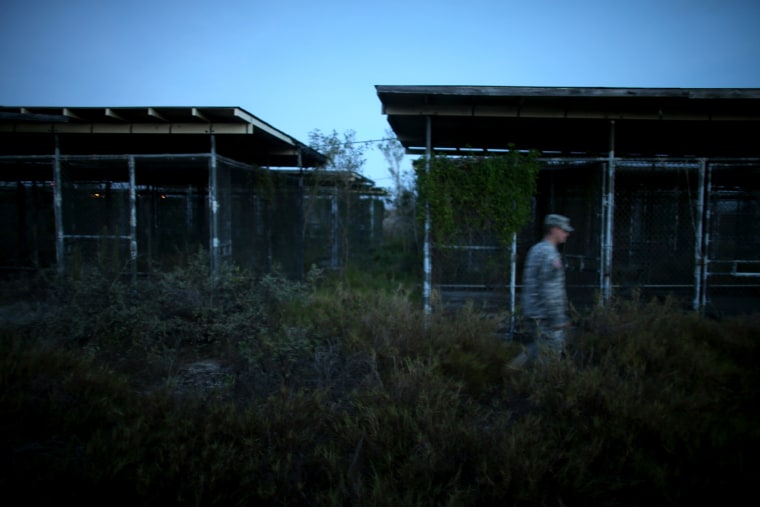Five years ago today, President Obama issued an Executive Order outlining his plan to close the prison at Guantánamo Bay. Its population has been whittled down to 155 detainees but Guantánamo is still open—a continuing symbol not just of one of the United States’ more controversial post-September 11 counterterrorism initiatives, but of one of the Obama administration’s more disheartening policy failures.
Part of the problem has been a series of onerous restrictions Congress has placed on the transfer of detainees to their home countries, detention within the United States, or release. In the 2014 National Defense Authorization Act, Congress expanded the president’s power to send detainees home, but the bar on transfer into the United States remains. The courts have not helped either.
But the central obstacle to closing Guantánamo has been the fate of a core group of detainees—46, as of this writing—whom the government has designated as too dangerous to be released. And yet, in each of these cases an array of evidentiary or substantive roadblocks preclude a civilian or even military criminal trial. So long as this group exists, closing Guantánamo was never going to be synonymous with ending detention; even if the other remaining detainees can be sent overseas or tried here, there would still be the “unreleasable” 46.
Even as this bloc of detainees has quietly shaped the debate over closing Guantánamo, it is also a looming shadow over the impending debate surrounding the Authorization for the Use of Military Force (AUMF). The AUMF, enacted in the immediate aftermath of the 2001 attacks, has been invoked in recent years as justification for uses of force against an increasing array of groups with no connection to September 11—often with little transparency from the U.S. government as to who these groups are or how they are connected to al Qaeda or the Taliban. At the same time, Obama has himself emphasized the decimation of al Qaeda’s “core.” The planned withdrawal of U.S. combat troops from Afghanistan underscores the extent to which the conflict that Congress authorized over 12 years ago is increasingly reaching its “tipping point,” justifying either outright repeal of the AUMF, or at least substantial reform. The true utility of the AUMF, once we pull out of Afghanistan, may be solely in providing a continuing basis for detention at Guantánamo.
But if the unreleasable 46 are the principal barrier to both closing Guantánamo and reforming the AUMF, it’s worth asking whether we might be better off with a compromise solution that could be tailored to them. Such authority already exists under section 412 of the USA PATRIOT Act.
That provision (which has never been used) is not specific to the Guantánamo detainees; it authorizes the Attorney General to detain non-citizens suspected of being engaged in terrorism or in “any other activity that endangers the national security of the United States.” The statute requires the Attorney General to release the detainee if he has not commenced criminal or deportation proceedings within seven days. But it also contemplates the possibility of longer-term detention—for renewable six-month periods—“if the release of the alien will threaten the national security of the United States or the safety of the community or any person.”
Such an approach won’t appease anyone. Those who have been among the most vocal critics of Guantánamo would be the last to endorse any “solution” that has at its core the continuing noncriminal detention of any group of the detainees—regardless of where or under what circumstances. All the more so if such a solution is perceived as a potential authorization for additional detention going forward, untethered to the armed conflict authorized by Congress in 2001. Those who support detaining these individuals indefinitely would object to the far stricter procedural and substantive standards that invocation of section 412 would trigger, and the periodic judicial review.
But section 412—or a comparable statute—may offer a least-worst solution to the increasingly intractable problem posed by the unreleasable 46. With those 46 detainees provided for, it might be far easier both legally and politically to release, repatriate, or try the remaining 109 detainees. Such authority would also remove the elephant in the room from the AUMF debate, allowing Congress to resolve that issue on its own merits. In short, section 412 could provide a legal framework unique to these “legacy” cases, while repudiating the paradigm under which those cases were able to arise in the first place.
It may mean that many, if not most, of these 46 men are still in U.S. custody five years from now. But that may just be the price we have to pay for a repealed AUMF and a closed Guantánamo.
Stephen Vladeck is Professor of Law and Associate Dean for Scholarship at American University Washington College of Law
